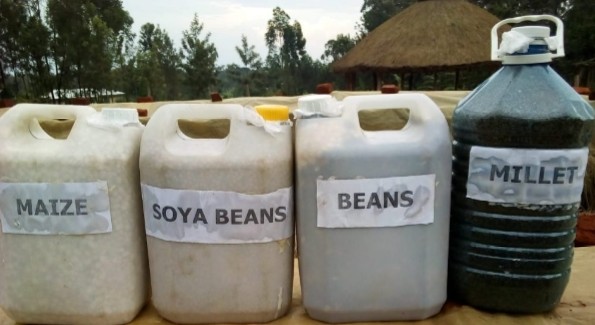By Malachi Motano
The war against post-harvest loss seemingly may soon have a major victory with your help, as more simple and cost-effective measures continue to be adopted in the value chain. I learned of jerrycan bean storage technology that is gaining popularity in Kenya courtesy of the Feed the Future Scientific Animations Without Borders Responsive Adaptive Participatory Information Dissemination Program or SAWBO RAPID as it is known, a program made possible with support from USAID and based at Michigan State University and Purdue University in the United States (U.S.).
Using animations in local languages with familiar imagery and collaborating with local partners, The SAWBO RAPID project identifies critical food security topics and delivers knowledge to mitigate COVID-19’s secondary economic impacts, including disruption to trade, supply chains and markets. (Animation project seeks to lessen COVID-19 secondary impacts with series of videos).
The project is a part of SAWBO, who has been creating animations and delivering knowledge globally for over a decade. The SAWBO library contains over 100 animations in 200+ language variants reaching over 50 million known viewers. Visit the SAWBO website for more information.
Post-harvest loss, according to industry players, can be defined as the degradation in both quantity and quality of food production from harvest to consumption resulting mainly from poor storage, among many other internal and external factors.
According to the SAWBO video dubbed “Post Harvest Loss: Jerrycan bean storage” broadcasted in many local dialects ranging from Swahili, Kidigo, Isukha, Wanga, Bukusu, Luo and others (see complete language listing with links at end of article) farmers need not to worry of the cost of this technique, since storage methods can simply be improvised and at the end of the day the farmer will be able to save his produce from destruction by pests for home consumption as food, seeds or sell competitively in different markets.
The video explains how bruchids, insects that attack beans, infect bean supplies. The insects bore holes on the beans reducing their weight, quality and chances of germination that allow the beans to grow. Jerrycan bean storage emerges to counter the challenge.
The container size should be at least 5 liters, with an optimum size of 10 to 20 liters. In the absence of a Jerrycan, the farmer can use any dry container of similar size, as long as the beans are packed into the container as tight as possible.
Before storing the beans in an airtight Jerrycan, the farmer needs to dry the beans well in the sun or a dark sheet of plastic to make sure they have a low moisture content, sort the beans carefully removing the ones that are already damaged, then find a clean dry Jerrycan and pour the beans inside.
Upon filing the Jerrycan with beans to the top, shake it well to be sure that the beans are tightly packed. Add more beans if there is space. It is very important that the Jerrycan be completely filled, to remove all the air, otherwise insects will not die inside and when there is a new supply of air, the eggs it laid may hatch.
“Once you are sure the beans are well packed, cover the top with a small piece of soft plastic bag, to help ensure that your beans will be safe from attack by insects. Remember to label the Jerrycan with the date it was sealed and with the intended use of the beans, either for food or for planting,” the SAWBO video says.
Once the Jerrycan is sealed, do not open it for at least a month so that the bruchids die. It is important that you never open the Jerrycan until the beans are needed for planting, eating or selling. If you open the Jerrycan, there will be a chance the new oxygen supply allows the eggs to hatch and cause damage to your beans. But if you follow this process keenly you will have more beans to eat, sell and plant.
According to experts, every farmer should employ various cost-effective methods to save their produce from invasion by pests. In Kenya, data at the Ministry of Agriculture shows that post-harvest management has been a major problem with an estimated loss of 20-30 percent in cereals.
This animation is available in 36 languages. Please watch, download and share this video by sharing the link on WhatsApp, Twitter, Facebook, etc.
SAWBO RAPID is funded through a grant from Feed the Future, the U.S. Government’s global hunger and food security initiative. This blog article was made possible through support provided by the U.S. Agency for International Development under the terms of agreement no. 7200AA20LA00002. The opinions expressed herein are those of the author and do not necessarily reflect the views of the U.S. Agency for International development or the U.S. government.




